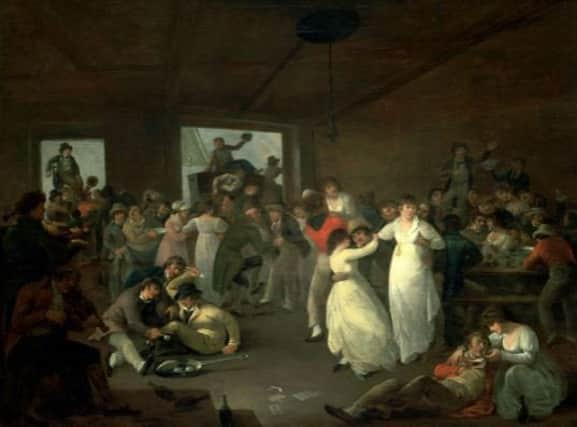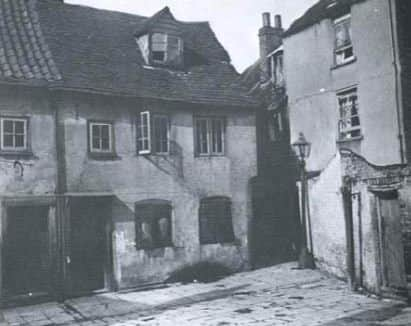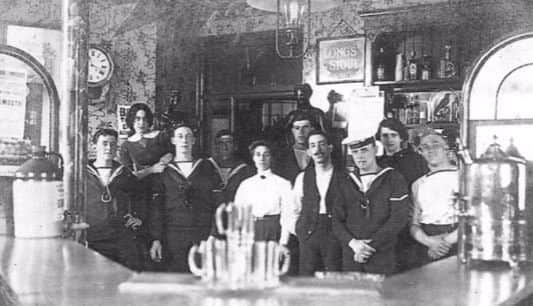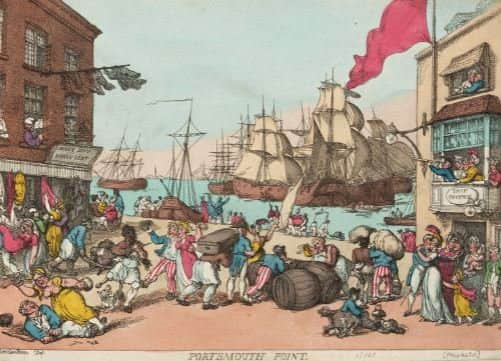Prostitutes and scammers: New app will show the dangerous and disturbing history of Portsmouth's old town


Now the dark and compelling past of some of Portsmouth’s lesser-known areas has come to light thanks to the work of local historians.
Academics from the University of Portsmouth have uncovered the hidden tales of the city’s ‘Sailortown’ districts from the nineteeth century.
Advertisement
Hide AdAdvertisement
Hide AdThese areas were once known as dangerous and uncivilized, but residents and visitors will soon be able to explore more of them thanks to a new mobile app.


Its tales include sailors gathering at The Hard - known as ‘The Devil’s Acre’ for its many drinking establishments, and how local prostitutes were arrested and forced to undergo medical checks for diseases before they could work again.
The app has been developed by Professor Brad Beaven, from the university’s history department, and is based on his team’s research on British ports.
He said: ‘Usually when you look at sailors, the history stops at the dockyard gates.
Advertisement
Hide AdAdvertisement
Hide Ad‘Through our research we looked at where these sailors would have drunk, would have lived as well.


‘This area has been underesearched by historians.’
The Sailortown emerged in Old Portsmouth during the eighteenth century, and with the development of steamships, moved to Portsea by the 1850s.
Over time the area developed a troubling reputation, not least for being full of brothels and prostitutes.
Professor Beaven said: ‘In the 18th and 19th century the Sailortown changed from Old Portsmouth into Portsea as ships docked in a different place.


Advertisement
Hide AdAdvertisement
Hide Ad‘There were lots of sailors coming and going. There were lots of superstitions attached to the place and its way of life.
‘As they were in the navy they were often away for a long time, so when they came ashore there was a carnival-like atmosphere.
‘They were often greeted by people who might rip them off. There were women from the brothels and landlords waiting too.
‘The sailors were quite vulnerable when they stepped ashore.’


Advertisement
Hide AdAdvertisement
Hide AdThrough the app users will be able to walk and immerse themselves in the Sailortown culture.
With the help of developer NautoGuide Ltd, historical maps will show guided walks through the district and help visitors experience what it was like in the nineteenth century.
The app will show you where the sailors would have lived, drank, and been entertained at one of the 300 brothels the researchers believe existed in the area.
Professor Beaven said: ‘We did a lot of research into Portsmouth and created a huge database. It includes more than 6,000 sailors that were in the census between 1850 and 1911.
Advertisement
Hide AdAdvertisement
Hide Ad‘As you walk around you get alerts from your phone, which could show you images or tell you about what happened in those places.
‘We had all this research and data and we didn’t want to keep it within the university.


‘It is about understanding how important Portsmouth was as a city and how the sailors were part of the local economy.’
So far the app has been developed for Old Portsmouth and Portsea, but there are plans to develop it for London’s notorious Ratcliffe Highway.
Advertisement
Hide AdAdvertisement
Hide AdThe research team are also looking for the public’s help to build up the app’s database.
Professor Beaven added: ‘We also want the general public to contribute to it. If people have stories that go back to 19th century Sailortown, or scanned images or documents, they can send them to us.’
The app will be available to download this summer.
If you’ve got any folklore stories, photos or documents about the Sailortown era you can get in touch with the team by sending an email to [email protected].